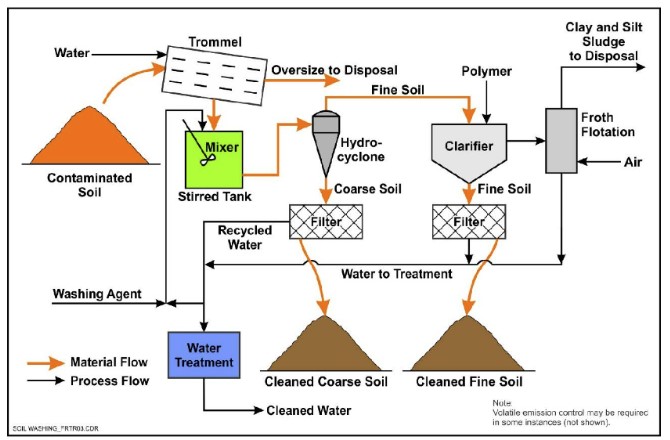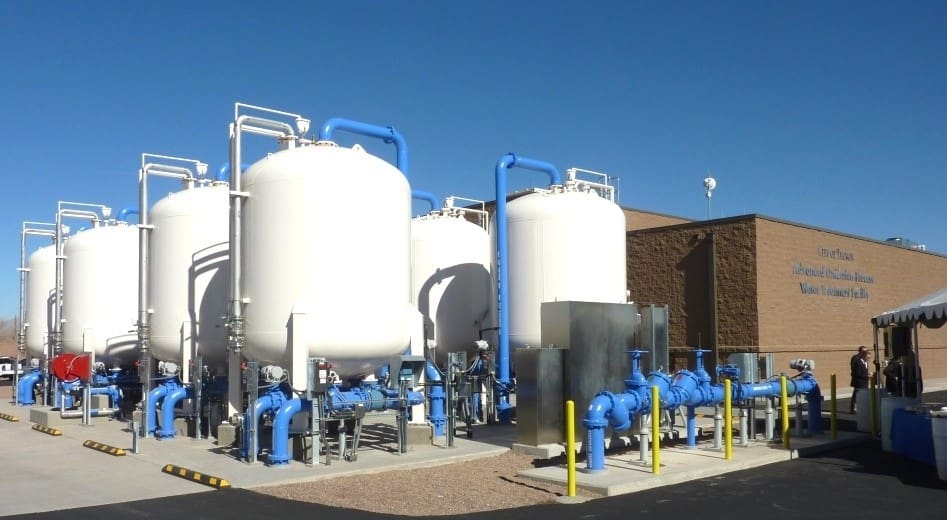How PFAS Treatment Makes Sure Clean and Sustainable Water
The presence of PFAS, frequently called "permanently chemicals," presents significant challenges to water quality and public health. Advanced therapy technologies, consisting of activated carbon adsorption and membrane layer purification, have become efficient remedies to reduce these impurities. By employing these techniques, areas can not just attain cleaner water yet likewise foster sustainable practices that secure communities. The implications of these treatments extend beyond instant health benefits; they elevate crucial inquiries concerning long-term water administration approaches that must be resolved to make certain a resistant future. What does this mean for our approach to water sustainability?

Recognizing PFAS Contamination
PFAS, or per- and polyfluoroalkyl substances, have arised as a significant ecological worry as a result of their prevalent occurrence and determination in the setting. These synthetic chemicals have been utilized in various commercial applications and customer products, including non-stick pots and pans, water resistant garments, and food product packaging, because of their one-of-a-kind properties such as water and oil resistance.
The contamination of soil and water resources by PFAS occurs primarily with commercial discharges, firefighting foam usage, and leaching from garbage dumps. pfas management. Once released, these compounds are immune to degradation, causing their build-up in the setting. This perseverance raises essential issues, as PFAS can travel fars away through groundwater and surface water supply, influencing alcohol consumption water products and communities

Health Risks of PFAS
The perseverance of PFAS in the atmosphere raises substantial health problems for individuals revealed to these compounds. Study has connected PFAS exposure to numerous unfavorable health and wellness effects, consisting of immune system dysfunction, liver damage, and raised danger of particular cancers.
The universality of PFAS in consumer items, such as non-stick cookware, water-repellent materials, and food packaging, additional intensifies the danger of direct exposure. Drinking water polluted with PFAS is a significant concern, as these chemicals can leach right into groundwater sources. Susceptible populations, including children and those living near commercial websites, may deal with intense risks because of their creating systems and possible for higher exposure levels.
As understanding of these wellness risks remains to expand, governing agencies are beginning to establish standards for PFAS degrees in alcohol consumption water. Public health initiatives are necessary to mitigate exposure and safeguard neighborhoods from the long-lasting results of these hazardous substances.

Ingenious Therapy Technologies
Exactly how can we properly deal with the obstacles positioned by PFAS contamination in water resources? Innovative therapy modern technologies are becoming critical services in the quest for tidy water. These methods focus on the elimination or destruction of per- and polyfluoroalkyl compounds (PFAS), which are infamous for their persistence in the atmosphere.
One encouraging approach is adsorption utilizing innovative materials, such as activated carbon and ion exchange resins. These products have actually shown effectiveness in catching PFAS particles from water. One more significant modern technology is membrane filtering, which uses nanofiltration and turn around osmosis to different contaminants at the molecular level, therefore supplying an obstacle versus PFAS.
In addition, advanced oxidation processes (AOPs) employ strong oxidants to break down PFAS substances right into safe results. This method is specifically effective for treating highly contaminated water sources. Bioremediation strategies, using specific microorganisms, are also being explored to deteriorate PFAS.
As research study continues, hybrid systems that integrate several innovations might offer enhanced efficiency, addressing the intricacies of PFAS contamination. The growth and execution of pfas management these cutting-edge therapy modern technologies are crucial actions towards guaranteeing the security and sustainability of our water resources.
Benefits of Reliable PFAS Therapy
Properly dealing with PFAS contamination in water resources substantially enhances public wellness and ecological safety. PFAS, usually described as "forever chemicals," are immune to deterioration and can gather in the body, leading to significant health and wellness risks such as cancer cells, liver damage, and body immune system dysfunction. By carrying out effective therapy methods, areas can decrease exposure to these damaging substances, eventually boosting the health outcomes of their populations.
In addition, successful PFAS treatment adds to the preservation of local ecological communities. Contaminated water can negatively impact marine life and interrupt the fragile balance of regional environments. By ensuring tidy water, therapy processes safeguard biodiversity and keep ecological stability.
In addition, reliable PFAS remediation can promote public self-confidence in water top quality. When communities are assured that their drinking water is complimentary from harmful pollutants, it advertises a feeling of safety and security and well-being. This count on is necessary for area engagement and support for ongoing water administration efforts.
Future of Water Sustainability
Amidst expanding problems concerning water quality and scarcity, the future of water sustainability rests on innovative methods and collective initiatives. As neighborhoods deal with the impending dangers of impurities like PFAS, the growth of innovative therapy modern technologies is crucial. These modern technologies not just concentrate on the elimination of unsafe materials yet additionally advertise the reuse and recycling of water, consequently minimizing general demand.
Furthermore, effective water administration plays a crucial role in making certain lasting methods. Policymakers need to integrate scientific study with governing structures to establish clear guidelines for water use and therapy. Stakeholder interaction, including neighborhood neighborhoods and markets, fosters a feeling of common responsibility and motivates lasting methods across numerous markets.
Investment in infrastructure is additionally important; upgrading aging systems to incorporate modern-day filtering and filtration techniques can considerably enhance water high quality. Additionally, welcoming eco-friendly technologies, such as all-natural filtering systems, can give green services.
Eventually, the future of water sustainability depends on an alternative approach that integrates modern technology, policy, and area involvement. By focusing on these components, we can protect our water sources for generations to come, making sure tidy and sustainable water for all.
Final Thought
Finally, the efficient therapy of PFAS is important for making sure tidy and sustainable water. By utilizing innovative technologies such as triggered carbon adsorption, membrane layer filtration, and advanced oxidation processes, areas can significantly decrease the health and wellness threats associated with these pollutants. The integration of these treatment techniques sustains environment defense and boosts biodiversity. Ultimately, robust PFAS treatment techniques add to long-lasting durability in water administration, promoting public count on water top quality and advertising lasting techniques.